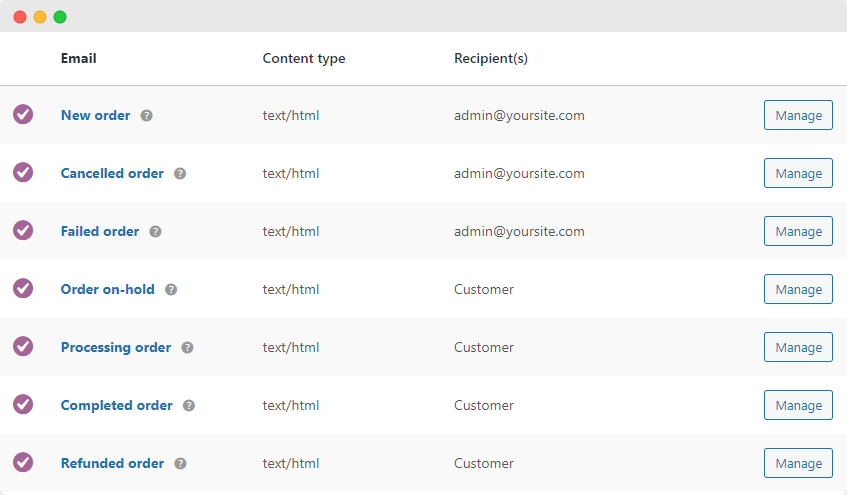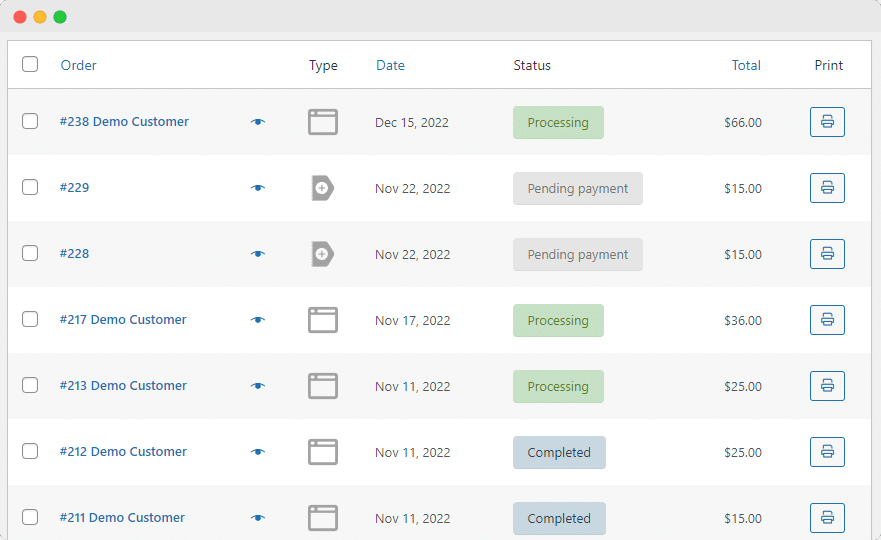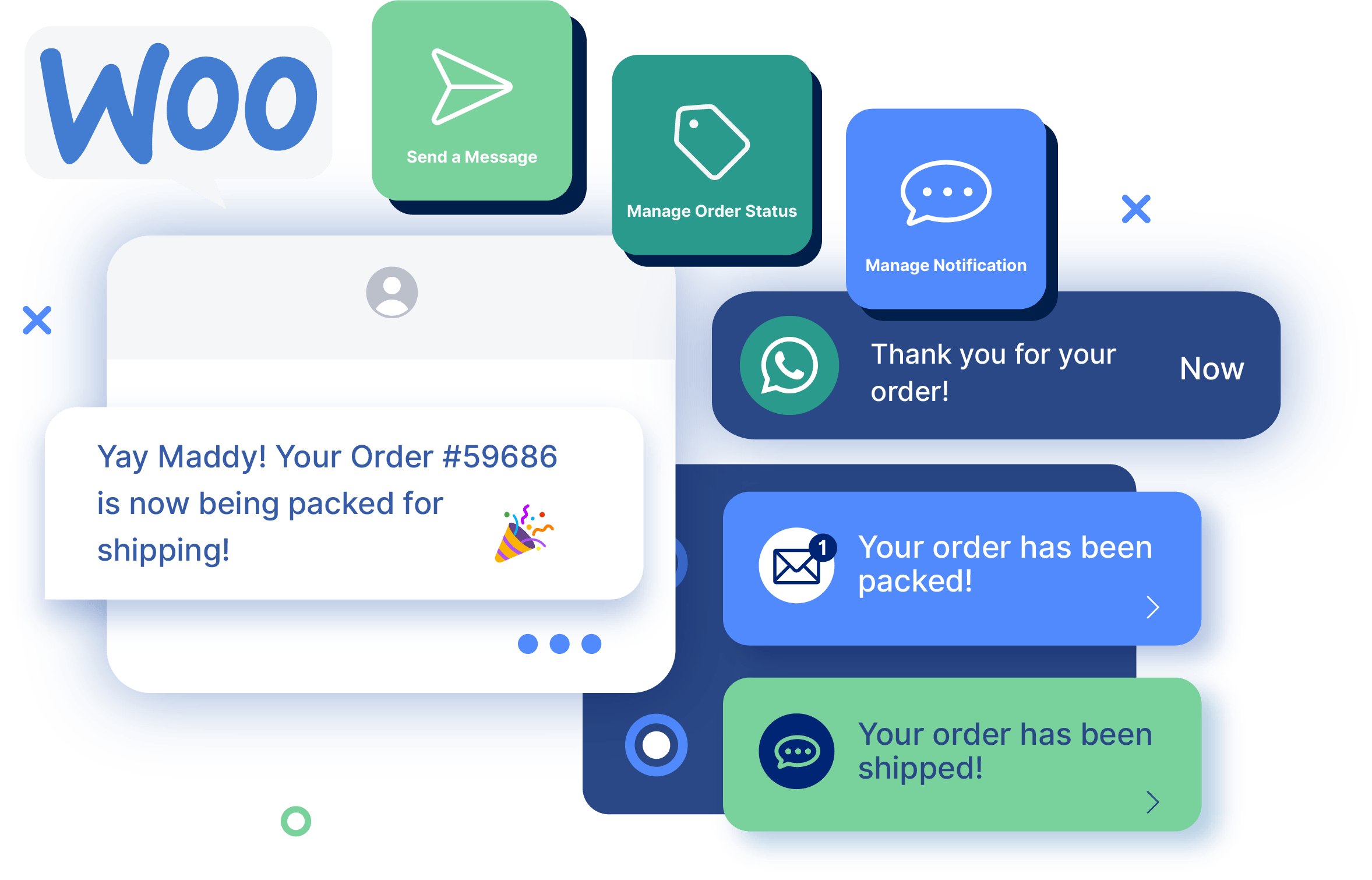Tutorials
How to Fix Unsent Email Notifications in WooCommerce
Are you having issues with your WooCommerce email notifications not sending? If so, then you’re not the only one. This is a common complaint amongst WooCommerce store owners, many of whom have problems with unsent or undelivered email notifications. And it’s not just a problem that affects business owners – customers also suffer if they don’t receive that all-important email notification about the status update of their order.
As you’ll probably already be aware, emails play an integral role in the success of your eCommerce store, allowing your fulfillment staff to work efficiently and your customers to stay up to date with everything that’s happening with their orders. Ultimately, while having problems with transactional emails may not seem like a big deal, it can cause problems that impact your ability to deliver a first-rate service to your customers.
Thankfully, it’s not a problem that you have to live with. There are things you can do that’ll identify what’s causing issues with your WooCommerce email notifications – and once you know that, you can get to work on fixing the issue once and for all.
In this post, we’ll take a look at the most common WooCommerce email notification problems, as well as offer guidance on what you can do to make them a thing of the past.

What kind of emails can you send in WooCommerce?
Within WooCommerce, you can send a host of different types of automated administrative and transactional emails, which are automatically sent once a trigger has been activated. Below, we’ll run through some of the most common types of emails that WooCommerce can send.
Transactional emails
- New order: Sent when a customer places an order.
- Canceled order: Sent when an order is canceled, either by the customer or business.
- Failed order: Sent when an order is not successful.
- Order on-hold: Sent when further information/payment/investigation is required.
- Processing order: Indicates that the order has been accepted and is being processed.
- Completed order: The order has been dispatched to the customer.
- Refunded order: A refund has been issued to the customer.
- Failed subscription renewal: This usually indicates an issue with the automatic payment method.
- Pre-order payment action needed: Prompts the customer to take additional steps.
- Payment authentication requested: Helps to combat fraud.
Administrative emails
- Customer note: An email from the customer to the admin.
- Reset password: A reset password request from a customer.
- New account: Sent to the store admin when a customer creates an account.
It’s very easy to set up these emails from within WooCommerce. Simply navigate to WooCommerce > Settings from within the WordPress dashboard, and then click ‘Emails.’
Once there, you can enable (or disable) which emails you would like WooCommerce to send by default.
There is some capacity to change the appearance and content of the emails. We have a handy guide on customizing your WooCommerce email notifications if you need some help getting started.
Why is WooCommerce not sending email notifications?
Automatic WooCommerce email notifications are only useful when they’re actually sent. If your email notifications are not going through, then it could be due to one of the following reasons:
Deliverability issues
This could mean that either WooCommerce is not sending the emails correctly, or they’re not being received in your customers’ email inboxes. Testing whether your emails are actually being sent and received is the first step in troubleshooting issues with your WooCommerce email notifications.
Emails being flagged as spam
If your emails are sending correctly, but are not being received by your customers, then it’s possible that they’ve been caught in a spam folder. Your emails may not be filtered by all spam filters, but if it’s caught by any, then it’s an issue that’ll need addressing.
Issues with your site’s reputation
Some email hosts, such as Gmail, look at the reputation of the site sending the emails to determine whether to deliver it to an inbox. They’ll determine your email deliverability score by looking at your IP reputation, which is influenced by the quality of the content, the email addresses that receive your emails, and whether receivers engage with the email.
Improving all of these factors can enhance your IP reputation, which will in turn help to improve the deliverability of your emails.
How do you fix WooCommerce email notifications that aren’t working?
Ready to begin fixing your email notification delivery problems? Then try these troubleshooting methods.
Check email settings
The first step is to check your WooCommerce email settings. One of the most common issues with email notifications not sending is the accidental deactivation of automated email notifications on the email settings page. If you have configured your email settings incorrectly, then getting your WordPress emails working again will be a simple fix.
To check your settings, click the ‘Emails’ tab on the WooCommerce settings page. You’ll be presented with a list of all the emails that can be sent automatically from your store. On each email you want to send, click the ‘Manage’ button. The checkbox for ‘Enable this email notification’ should be checked.
If you’re having problems receiving emails internally, then double-check the ‘Recipient’ field box to ensure the right email address has been entered.

Check order and payment status
Transactional emails are automatically sent following a change in order status. If your email delivery problems are limited to order notifications, then the problem may be with the status of your orders, rather than with the email notifications.
New orders in WooCommerce are automatically assigned an order status. For example, if payment has been received, then the status should change to ‘Processing.’ At that point, an order confirmation email should be sent to your customers because the necessary trigger has been activated.
However, if your orders are being set to a different status, then the trigger won’t be activated, and no email will be sent. A good start for checking this is to review all your recent orders, which you’ll find by going to WooCommerce > Orders. There, you’ll see all of your orders and their current status.

You may see that instead of having a ‘Processing’ status, they instead have the ‘Pending Payment’ status. There are a few reasons why this may be the case, including:
- A customer placed an order but exited the website before completing the payment process.
- Problems with your payment gateway mean customers can not complete payment.
- You’ve set up manual payments (for example, a bank transfer). In this case, you will need to confirm that payment has been made and then actively change the order status to ‘Processing’ yourself.
If your email settings are all correct and your order statuses are as they should be, don’t worry! You still have plenty of options to help fix your WooCommerce email issues.
Use SMTP to send your WooCommerce email notifications
WooCommerce allows users to send automatic emails using the wp_mail() function, which is good, but not perfect, and may cause some of your email notifications to go unsent.
The issue with wp_mail() is that the hosting provider that processes the email uses PHP, and then usually uses a third-party email router, such as Sendmail or Postfix, to route the email to the recipient’s host. This can cause problems if your web host doesn’t offer dedicated email hosting or doesn’t have servers designed for sending emails.
One way to check whether your emails are making it through is to check your email logs by using a free dedicated email logging plugin such as WP Mail Logging. More comprehensive automatic email solutions like Flow Notify also offer built-in email logging – we’ll look at some of the benefits of using a more advanced solution like Flow Notify a little later.

If you can see that your emails are being sent just fine, but that they’re not being received, then an easy way to fix this is to use a dedicated SMTP provider to do the job of sending your emails for you.
The SMTP (Simple Mail Transfer Protocol) method helps to boost the deliverability of your emails by incorporating robust authentication methods into the process. This helps your customer’s email software to accept your emails, which in turn significantly reduces the likelihood that they’ll be incorrectly caught by spam filters.
You can’t send your emails via SMTP directly from within WordPress, since it doesn’t support it by default. However, there are plenty of SMTP plugins that are compatible with WordPress that you can use.
Two of the most popular options include MailPoet, with which you can send unlimited free emails to up to 1,000 unique recipients each month, and SendinBlue, with which you can send up to 9,000 emails for free each day. Both of these handy plugins are fully compatible with Flow Notify.
Consider your email spamminess
Did you know that approximately 85% of emails are marked by email spam filters as spam? That’s a whole lot of emails that the intended recipients are unlikely to ever see. As you might expect, these filters are powered by AI, which checks the legitimacy of an incoming email and decides whether to send it to the inbox folder or the spam folder. Some of the things the AI looks for include:
Reputation
Spam filters look at factors like how many complaints have been made against the sender, the reputation of the sending server’s IP address, and how long the domain has been active when determining whether to mark emails as spam.
Engagement
How previous recipients have engaged with emails from the sender in the past is taken into account, too. If emails are routinely deleted, reported, or assigned to the junk folder, then spam filters are more likely to automatically flag an email as spam. If the emails are opened, viewed, and clicked, then the emails will be more likely to make it through the checks.
Content
Including questionable, adult-focused content in your emails, or even including specific trigger words or phrases, will increase the likelihood of it being marked as spam. Poor email formatting, such as including uneven or large text and bright colors, can also result in a spam label.
Suspicious behavior
Sending too many emails at one time, hiding the IP address of the sender, or sending emails to a large number of invalid email addresses can all be deemed “suspicious” by spam filters. This helps to combat the use of outdated or bought email lists, as these will often include a large number of invalid addresses.
If you’re worried that your WooCommerce order emails or administrative emails fall short in any of these categories, don’t worry! There are various ways to check the “spamminess” of the emails you send. The plugin MailPoet provides a free email tester tool that will provide a spam rating out of ten and offer feedback on how to improve your score, including checking formatting, authentication, and improving IP reputation.
Once you’ve identified areas for improvement, you can use a custom notification plugin like Flow Notify to help improve the quality of your emails and make it more likely that they’ll go to your customer’s primary email folder, rather than their spam folder. Among other features, Flow Notify allows you to:
- Craft personalized email messages using both WooCommerce data fields and plain text. This can help you to avoid using words and phrases that trigger spam filters.
- Have full control over the look of your email. With Flow Notify, you can include a header image and select the color of your text and background. This will help you to avoid issues with poor formatting or email appearance causing your emails to be flagged as spam.
- Boost your email open and click rates by modifying the ‘From’ address and subject line of your transactional emails. Making it clear that your emails are from a legitimate source and serve a useful purpose enhances customer trust, helps to improve open rates, and results in your emails being less likely to be flagged as spam.
Check your website’s IP reputation
Your website’s IP reputation plays a big role in determining whether your customer’s email service providers trust or distrust your emails. A high trust score means they should always end up in the inbox, not the spam folder.
Various factors influence your IP reputation, including the quality of your email content, previous engagement levels with your emails, and the quality of addresses you’ve sent to. If you have a poor trust rating, then your emails will probably end up in the spam folder – and if things don’t improve, then your IP address could end up on an industry blacklist.
If you want to see your IP reputation, then use a free tool like Sender Score, which will give you a rating out of 100. If you learn that you have a poor IP reputation, then it’s time to take action. The best place to start is by removing any bounced email addresses from your mailing list
If you find that your IP address is on a blacklist, you’ll either need to switch your email sending method (i.e., by changing to an SMTP service as indicated above) or contact the blacklist’s website directly to get the decision reversed.
Debug common problems with WooCommerce email notifications not working
As we’ve seen, there are several reasons why your WooCommerce email notifications are not going through. If it’s not due to your internal settings, then it could be a result of your emails being marked as spam or issues with your IP reputation.
By following our comprehensive guide, you’ll be able to troubleshoot some of the most common reasons why WooCommerce email notifications go wrong in no time. To recap, here are the basic steps you’ll want to follow:
- Double-check your email settings.
- Check the order and payment status of your orders.
- Switch to an SMTP provider.
- Improve the quality of your emails (to reduce spamminess).
- Check your IP reputation.
Once you’ve resolved the problem, you can get to work on making your automatic WooCommerce emails as good as possible. In doing so, you’ll increase customer satisfaction and engagement, and all-around make your business run smoother.
You can take the quality of your WooCommerce emails to the next level with Flow Notify. This powerful WooCommerce plugin can help boost the standard of your email notifications by enabling you to:
- Send custom, personalized automatic notifications to your customers and staff via email, Whatsapp, and SMS.
- Perfectly time when your emails are sent by creating custom order statuses.
- Keep tabs on any deliverability issues thanks to built-in logging for SMS, WhatsApp, and email messages.
- And much more!
Ready to get started? You can try Flow Notify for just $49 a year, with a 30-day money-back guarantee.


